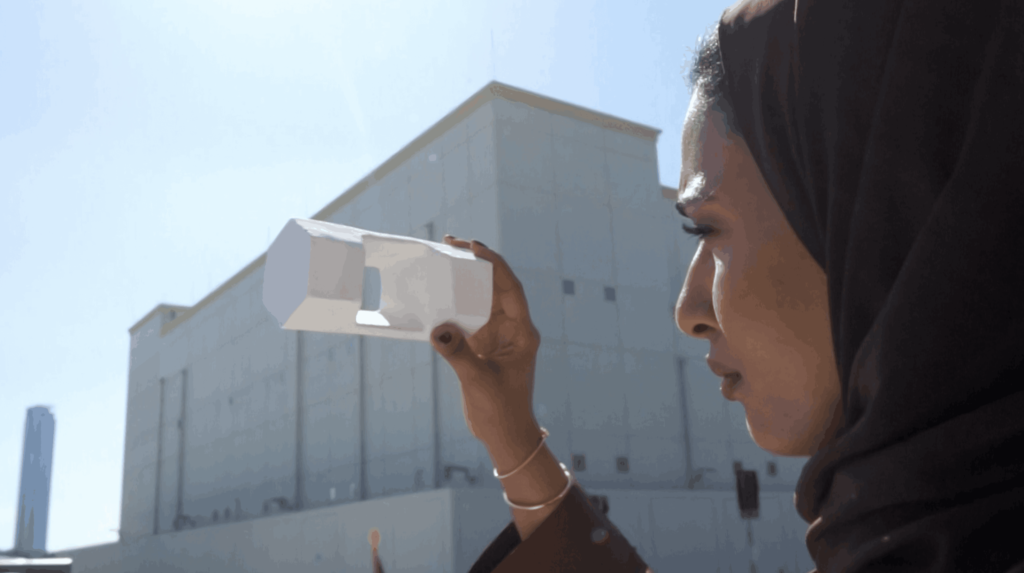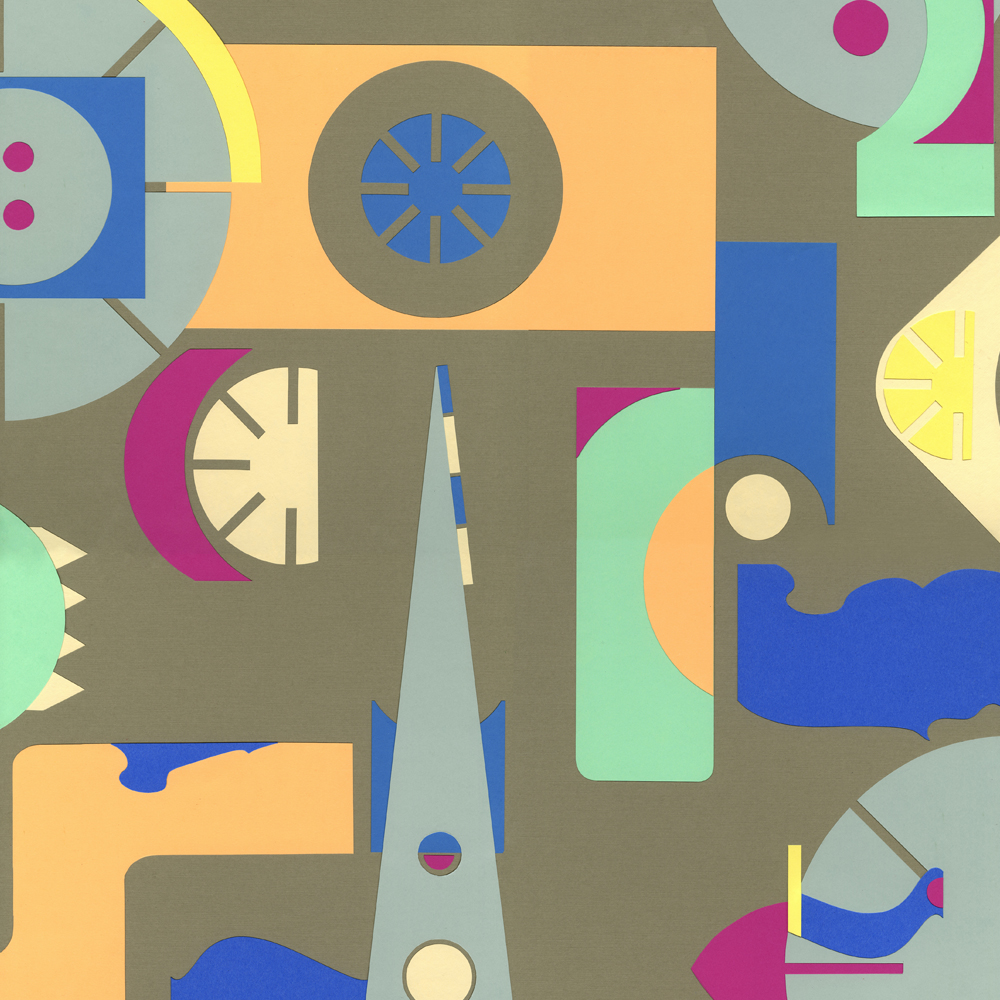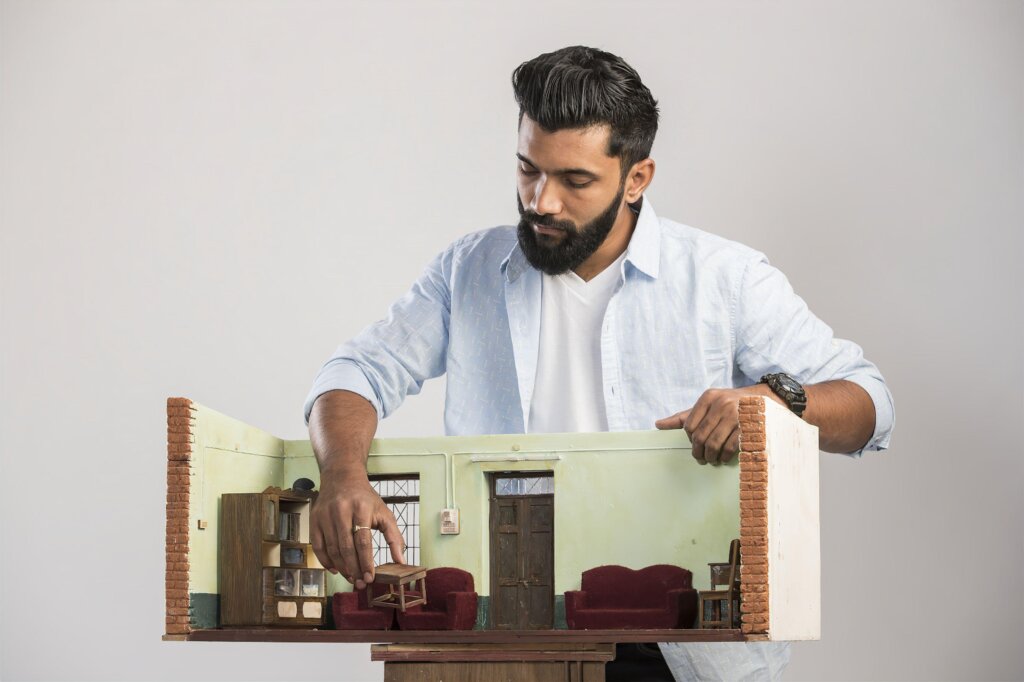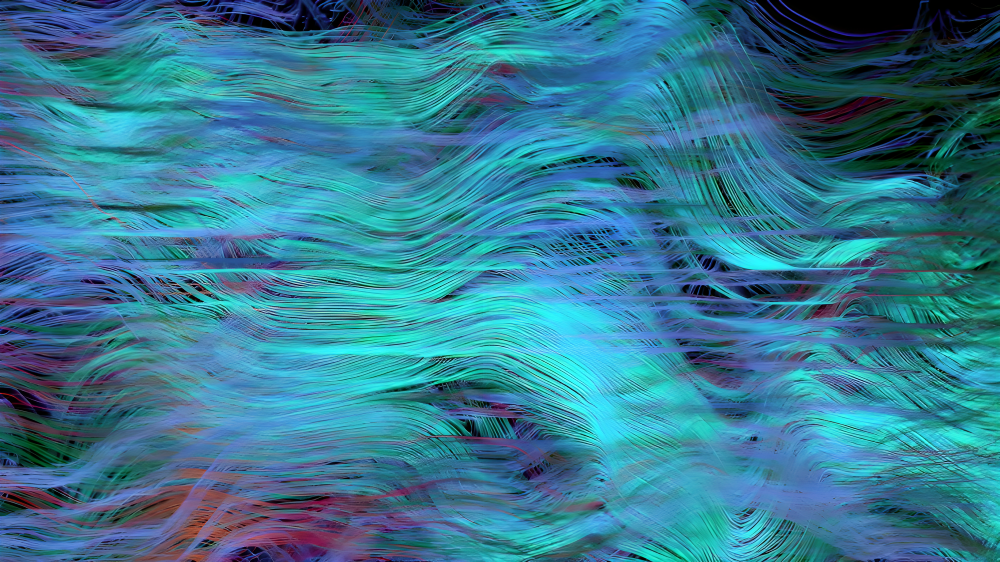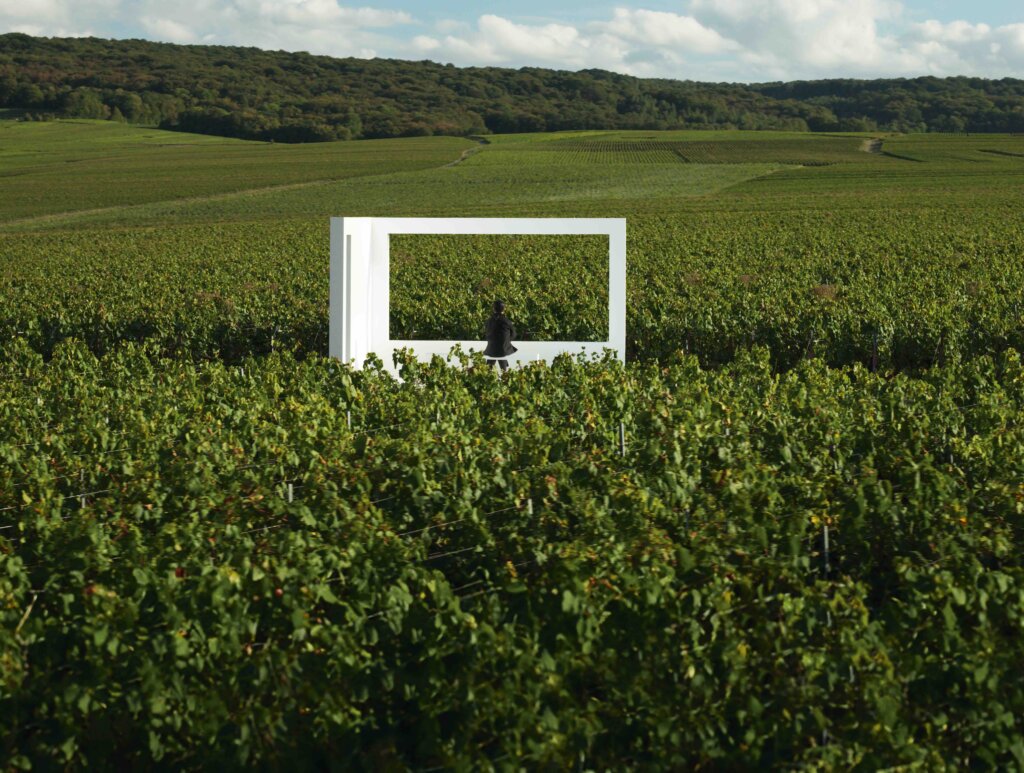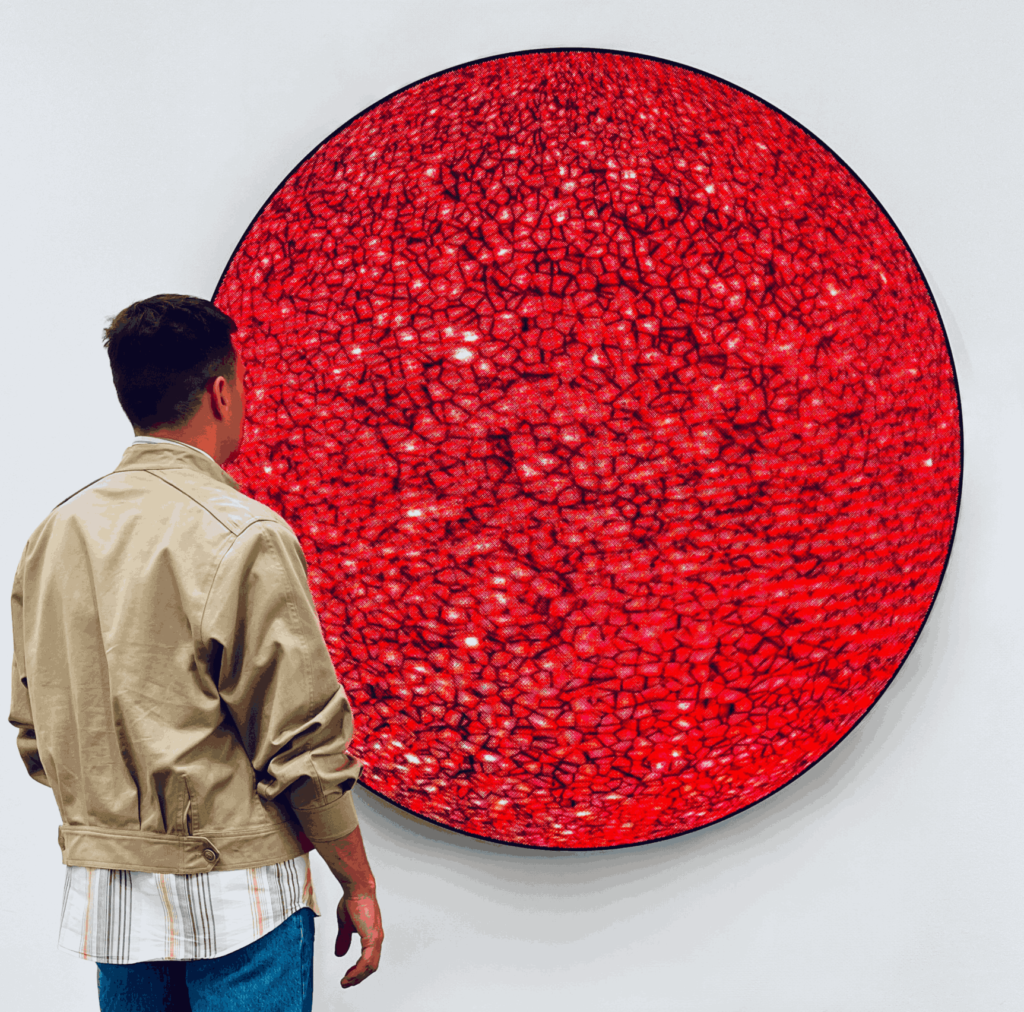Moza Almatrooshi, The Alphabetics of the Baker, 2021 – Ongoing, Performance, bread. Courtesy Hunna Art Gallery
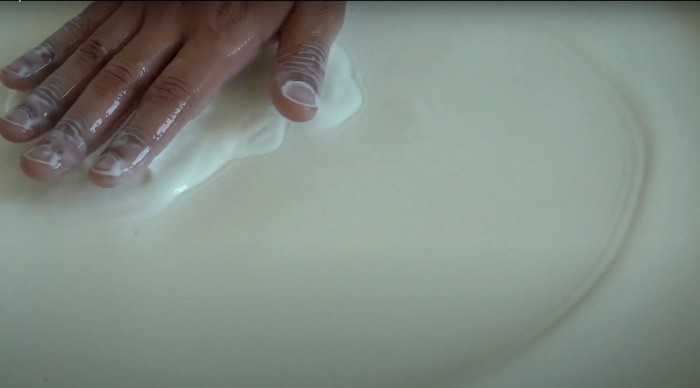
Meaning ‘gateway’ in Arabic, Bawwaba is a section of Art Dubai dedicated to new work (made in the last year) by artists from across the Global South. Now in its third edition, this year’s Bawwaba features solo presentations from 11 artists who originate from Brazil, India, Indonesia, Iran, Kenya, Morocco, Nepal, the Philippines, and the UAE. As the curator of the section, I have given it the title ‘Against Disappearance’ to highlight the artists’ shared endeavour to make visible the level of skill involved in creating works of art when such qualities of workmanship and artistry are disappearing from all aspects of life in the 21st century.
The contemporary world is fast-paced and shallow, attention spans are short, so the artists showing in Bawwaba have responded through the art of lingering. They have turned to vigorous tasks that expand their attention spans through obsessive detail. In contrast to the act of swiping a finger and scrolling a screen, these artists work with their hands, creating works of art to hold and behold. Their works also underline where they come from, as well as the world. Here, I will introduce some of the artists to look out for in this year’s Bawwaba section at Art Dubai.
The Nepali artist, Youdhisthir Maharjan, works with paper. He finds books in thrift stores, then meticulously cuts out individual alphabets from them, weaves strips from their pages and assembles them into works of art. By his hand, a book with an original title finds new life as an artwork. Its words turn into a visual image and create a new interpretation. The works bear a resemblance to traditional Tibetan Thangka paintings used for inner reflection and meditation.
Similarly, Gregory Halili, a Filipino artist, works with translucent capiz shell, a traditional material from the archipelago. He has developed a technique that allows him to paint on a miniature scale onto a shell’s delicate surface. The fragility of the shell allows light to shine through creating otherworldly pearlescent images.
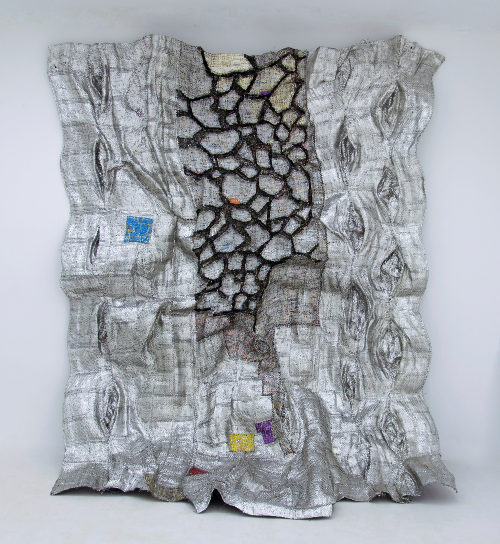
Dickens Otieno. Courtesy Circle Art Gallery
In contrast to Halili who uses a precious material, Dickens Otieno creates beautiful tapestries from everyday materials. The Kenyan artist weaves shredded aluminium cans into artworks using a technique normally meant for natural materials such as papyrus, raffia or palm. The colours and patterns of his works are inspired by his memory of his mother’s tailoring workshop in the shifting environment of Nairobi. By using discarded materials, Otieno also interrogates sustainability through his art.
In contrast to Halili who uses a precious material, Dickens Otieno creates beautiful tapestries from everyday materials. The Kenyan artist weaves shredded aluminium cans into artworks using a technique normally meant for natural materials such as papyrus, raffia or palm. The colours and patterns of his works are inspired by his memory of his mother’s tailoring workshop in the shifting environment of Nairobi. By using discarded materials, Otieno also interrogates sustainability through his art.
The environment is also a primary concern of the Indonesian artist, Maryanto, who is driven by his research into the country’s palm oil plantations in South Kalimantan and the industry’s conflict with indigenous tribes. Using traditional mediums such as painting, drawing and archival materials, he makes historical references to landscape painting as a colonial legacy of the Dutch East Indies. His work captures the current of capitalist extraction via monoculture as well as soon-forgotten motifs from local mythology.
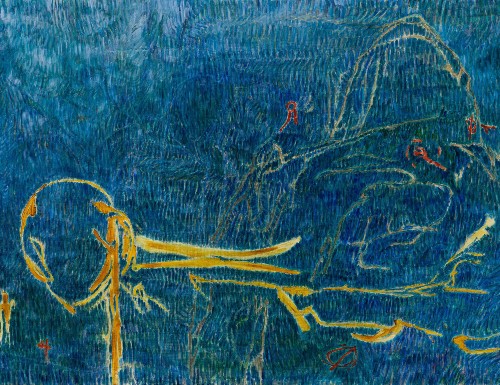
Achraf Touloub, Vies parallèles, 2021, oil on canvas, 180 x 110 x 3,5 cm. Courtesy of PARLIAMENT, Paris and the artist
From nature to technology, the Moroccan artist, Acharf Touloub, portrays our age of hyperconnectivity. In his paintings human figures deflect attention – they look down as if glancing at their smartphones or have their backs to one another – making visible the disappearance of community because of the lack of face-to-face interaction.
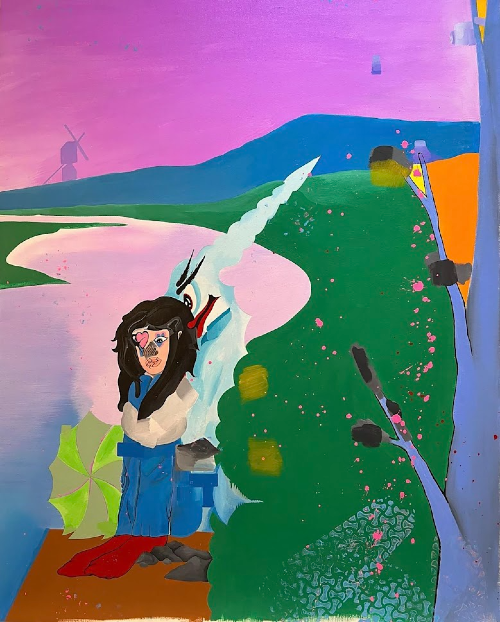
Pussy cat, Twisted Metal, M.smart, acrylic on canvas, 100×80 cm, 2022. Courtesy Sarai Gallery
While M. Smart, the youngest artist in Bawwaba, shows hyperconnectivity in a more positive light in his new series of paintings. His works show the vivid world of Iranian youth. By having to attend restrictive and conservative schools, these young people find home their only refuge where they can dwell and learn about other cultures via mass communication and the internet.
Last but not least, Bawwaba is commissioning a performance by UAE artist Moza Almatrooshi. Working with food and Arabian polytheistic practices, Almatrooshi’s performance is sure to spice up the fair with the flavour of the Global South.
Words by Vipash Purichanont
Bawwaba 2023 participating galleries and artists:
Blueprint12, New Delhi // Youdhisthir Maharjan (Nepal, 1984)
Circle Art Gallery, Nairobi // Dickens Otieno (Kenya, 1979)
Exhibit 320, New Delhi // Gunjan Kumar (India, 1980)
Hestia, Belgrade // Domingos Octaviano (Brazil, 1985)
Navahi Projects, Tehran // Siamak Filizadeh (Iran, 1970)
PARLIAMENT, Paris // Achraf Touloub (Morocco, 1986)
SARAI Gallery (SARADIPOUR), Mahshahr/London // M. Smart (Iran, 1998)
Silverlens Galleries, Manila/New York // Gregory Halili (Philippines, 1975)
Yavuz Gallery, Singapore/Sydney // Zico Albaiquni (Indonesia, 1987)
Yeo Workshop, Singapore // Maryanto (Indonesia, 1977)
Hunna Art Gallery, Abu Dhabi/Sharjah // Performance by Moza Almatrooshi (UAE, 1990)




